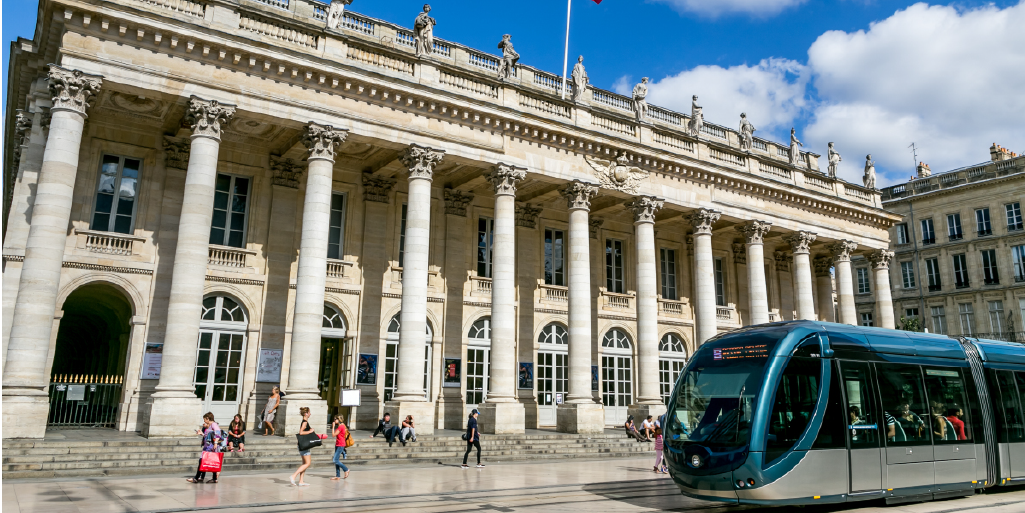Fourth most popular navigation application in France, according to AppAnnie. This is the ranking on the Apple Store of “Bonjour RATP”. The MaaS platform is behind Waze, Google Maps & SNCF Assistant. A ranking that demonstrates that public transport is certainly the most appropriate to convert a high number of users to MaaS. Indeed, they often already have an application & a large database of customers. But it is necessary to start with the right bases… Through this article, we will reveal our 3 recommendations for public transport authorities before jumping into the MaaS race.
1. Think ahead about your intermodal strategy
Public transport is the backbone of intermodality. In 20 years, according to the “summary of the more intermodal mobility workshop” of the National Mobility Conference, three times as many intermodal trips have been recorded.
In the majority of French urban areas, there has been an increase of more than 140% in trips combining public transport and cycling. And more than 66% of public transport and car journeys.
These are rather encouraging figures. However, according to a study conducted by BMW Group France, nearly 4 out of 10 French people perceive intermodality as being painful and time-consuming. With 1 in 2 French people feeling poorly informed about the mobility services available to them, according to the Barometer of Daily Mobility.
Figures demonstrate the importance of simplifying access to mobility by studying users’ needs. Focus on identifying the different advantages of integrating one mobility service over another. For example, for certain “white zones”, it would be interesting to integrate and conclude a partnership with a car-sharing service or a regional train service that can cover the first and last kilometers.
For this, do not hesitate to consult the inhabitants, the elected representatives of the communities concerned, merchants, transport companies, research institutes… An analysis that will allow you to offer your users the most complete MaaS platform, while establishing an excellent regulatory context, that includes an ecosystem of reliable partners. All this in an impartial and fair environment.
2. Re-think the infrastructure for a seamless experience
In any MaaS deployment, it is essential to facilitate the transition from one mode of transport to another. This starts with the urban infrastructure, such as multimodal hubs. This is an essential element in the promotion of more accessible and connected mobility.
But also in the ticketing infrastructure. Although more and more public transport operators have invested in Open Payment, it is essential to continue this trend. But above all, it is important to opt for common technology, capable of reading and accepting different data. For example, via the AMC (Application Multi-services Citoyenne) standard or digital platforms.
And finally, the last point is sometimes neglected. Namely, the optimization, or even the transition to a 5G coverage. A hyper-connectivity offering fluidity and speed in the exchanges. In particular, with the MaaS application, which must provide real-time and dynamic passenger information. Essential for all intermodal trip searches and centralized payments.
3. Outsource to ensure full interoperability
The data integrated in a MaaS application comes from different sources and has different types and formats: data on the availability of the mobility service, ticketing data, data on the traveler or on the infrastructure such as the location of charging stations for electric vehicles. A key factor in the development of a collaborative ecosystem is to guarantee perfect interoperability. But it is not always easy to get access to private operators’ data.
Some of them are reluctant to share their data, notably for fear of “disintermediation” between the operators and their customers. It can often take months to conclude a partnership with a mobility service. Not to mention interfacing! Or the sharing of payments, which is often a technical problem due to the multi-operator context on intermodal routes.
By working with technology intermediaries, you can focus on your core business of operating public transportation while staying ahead of the competition in terms of innovation. An alternative that allows you to avoid having to manage it internally. And thus, involve a lot of human and financial resources!
Jakarta, a successful example of a MaaS project
As explained throughout this article, the success of a MaaS project depends on the technology partners you select. A statement that can be confirmed by our experience with Jakarta’s public transport operator, JakLingko. Indeed, he could do the first tests of his super MaaS app, in only 3 months. And this on 4 different modes of transport, fully integrated (traveler information + payment)! A speed implementation enabled by the collaboration of different stakeholders, fully specialized in each essential brick of a MaaS application.
Namely, Thales for the compliance of the ticketing infrastructure. Jatelindo for the payment management. AINO Payment for the development of the front-end of the MaaS application. And finally, Lyko for the integration of the distribution and traveler information systems of the different mobility services providers.
Want to know more about Lyko’s APIs?
Our team is at your disposal and will be happy to discuss with you. To show you how to reduce your MaaS platform development time by three times. Or how to ensure end-to-end mobility services.
To schedule a meeting 👉 it’s just here.






